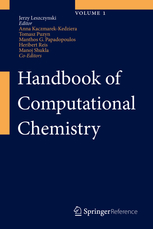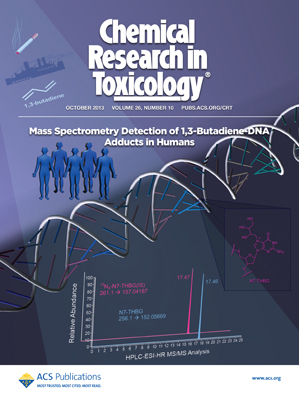
Young-Mook Kang, Ph.D.
I am striving to learn more about being
a full stack developer
I have great experience with multiple computer languages, including C++, Java, Python, etc. since I began to study on Assembly, Basic and C languages in 1988.
Additionally, I have a Master degree of computational chemistry, a Ph.D. degree in computational biology and over 16 years of experience working as a scientific software programmer in Bioinformatics and Cheminformatics.

My skills
Education
28.08.2015Ph.D. - Yonsei University, Seoul, Korea
Biotechnology
Advisor: Kyoung Tai No, Ph.D.
Committee: C.S. Shin, Ph.D., J.-S. Shin, Ph.D., C.N. Yoon, Ph.D., H.S. Son, Ph.D.
Thesis: “Relative Distance Tree: An Empirical Method for Transforming Qualitative Data into Quantitative Data using Relative Strength" and
"Quantitative Structure-Relative Volatility Relationship Model for Extractive Distillation of Ethylbenzene/p-Xylene Mixtures”
20.02.2004M.Sc. - Soongsil University, Seoul, Korea
Physical Chemistry
Advisor: Kyungsoo Paek, Ph.D.
Thesis: Development of Modified CoMFA Methodology using SFED Basis Functions
15.02.2002B.Sc. - Soongsil University, Seoul, Korea
Chemistry
Advisor: Kyoung Tai No, Ph.D.
Thesis: “Development of backpropagation neural network for predicting Auto-ignition temperature of organic compounds.”
Research Experience
March 2017 ~ presentPostdoctoral Associate
[Position]: Postdoctoral Associate
[Institution]: Korea Basic Science Institute
[Department]: Biomedical Omics Group
[Responsibility]: Senior Researcher
[Location]: Ochang-eup, Cheongju-si, Republic of KoreaApril 2016 ~ Feb 2017Postdoctoral Associate
[Position]: Postdoctoral Associate
[Institution]: Hanyang University
[Department]: Department of Life Science
[Responsibility]: Researcher
[Location]: Hanyang Univ., Seoul, Republic of KoreaSeptember 2015 ~ March 2016Principal Research Associate
[Position]: Principal Research Associate
[Institution]: Bioinformatics & Molecular Design Research Center
[Department] Chemo / Bioinformatics Team
[Responsibility]: Team Leader
[Location]: Yonsei Univ., Seoul, Republic of KoreaJuly 2014 ~ August 2015Senior Research Associate
[Position]: Senior Research Associate
[Institution]: Bioinformatics & Molecular Design Research Center
[Department] Chemo / Bioinformatics Team
[Responsibility]: Team Leader
[Location]: Yonsei Univ., Seoul, Republic of KoreaMarch 2012 ~ June 2014Senior Research Associate
[Position]: Senior Research Associate
[Institution]: Bioinformatics & Molecular Design Research Center
[Department] Cheminformatics Team
[Responsibility]: Team Leader
[Location]: Seoul, Republic of KoreaMarch 2012 ~ August 2014Research Associate
[Position]: Research Associate
[Institution]: Institute for Life Science and Biotechnology, Yonsei Univ.
[Location]: Seoul, Republic of KoreaMarch 2009 ~ February 2012Research Associate
[Position]: Research Associate
[Institution]: Institute of Life Science and Biotechnology, Yonsei Univ.
[Location]: Yonsei Univ., Seoul, Republic of KoreaMarch 2008 ~ February 2012Research Associate
[Position]: Research Associate
[Institution]: Bioinformatics & Molecular Design Research Center
[Department] Cheminformatics Team
[Location]: Yonsei Univ., Seoul, Republic of KoreaApril 2006 ~ March 2008Military service in Korea
[Classification]: The Army
[Rank]: Sergeant
[Responsibility]: Ammunition management
[Retirement Classification]: ExpirationMarch 2004 ~ August 2005Research Associate
[Position]: Research Associate
[Institution]: Bioinformatics & Molecular Design Research Center
[Department] Cheminformatics Team
[Location]: Yonsei Univ., Seoul, Republic of KoreaMarch 2002 ~ February 2004Research Assistant
[Position]: Research Assistant
[Institution]: Bioinformatics & Molecular Design Research Center
[Department] Cheminformatics Team
[Location]: Soongsil Univ., Seoul, Republic of KoreaMarch 2000 ~ February 2002Undergraduate Researcher
[Position]: Research Assistant
[Institution]: Bioinformatics & Molecular Design Technology Innovation Center
[Department] Cheminformatics Team
[Location]: Soongsil Univ., Seoul, Republic of Korea
Portfolio
Publications
Hui Kwon Kim, Myungjae Song, Jinu Lee, A. Vipin Menon, Soobin Jung, Young-Mook Kang, Jae Woo Choi, Euijeon Woo, Hyun Chul Koh, Jin-Wu Nam, and Hyongbum (Henry) Kim
Abstract : Cpf1 is a recently reported effector endonuclease protein of the class 2 CRISPR-Cas system. Here, we developed a method for evaluating Cpf1 activity based on target sequence composition in mammalian cells in a high-throughput manner. A library of >11,000 target sequence and guide RNA pairs was delivered into human cells using lentiviral vectors. Subsequent delivery of Cpf1 into this cell library induced indels at the integrated synthetic target sequences, which allowed en masse evaluation of Cpf1 activity using deep sequencing. Using this approach, we determined protospacer adjacent motif sequences of two Cpf1 nucleases, from Acidaminococcus sp. BV3L6 and Lachnospiraceae bacterium ND2006 (AsCpf1 and LbCpf1, respectively), and target sequence-dependent activity profiles of AsCpf1, which enabled the development of a web tool that predicts the indel frequencies for given target sequences (http://big.hanyang.ac.kr/cindel). Both the Cpf1 characterization profile and the in vivo high-throughput evaluation method will greatly facilitate Cpf1-based genome editing.
Contribution:
- Make a web application.
- Build an in silico model for AsCpf1 indel frequency prediction.
- Manuscript writing.
Used programs:
- CentOS 6.8
- Wordpress with PHP5, MySQL 5.1, Apache 2.2
- Python 2.6 with RNA, scipy, numpy, etc
- Javascript (jQuery, Ajax) with DataTables 1.10.10
Hyun Kil Shin, Young-Mook Kang and Kyoung Tai No
Abstract : Since many drug development projects fail during clinical trials due to poor ADME properties, it is a wise practice to introduce ADME tests at the early stage of drug discovery. Various experimental and computational methods have been developed to obtain ADME properties in an economical manner in terms of time and cost. As in vitro and in vivo experimental data on ADME have accumulated, the accuracy of in silico models in ADME increases and thus, many in silico models are now widely used in drug discovery. Because of the demands from drug discovery researchers, the development of in silico models in ADME has become more active. In this chapter, the definitions of ADME endpoints are summarized, and in silico models related to ADME are introduced for each endpoint. Part I discusses the prediction models of the physicochemical properties of compounds, which influence much of the pharmacokinetics of pharmaceuticals. The prediction models of physical properties are developed based mainly on thermodynamics and are knowledge based, especially QSAR (quantitative structure activity relationship) methods. Part II covers the prediction models of the endpoints in ADME which include both in vitro and in vivo assay results. Most models are QSAR based and various kinds of descriptors (topology, 1D, 2D, and 3D descriptors) are used. Part III reviews physiologically based pharmacokinetic (PBPK) models.
Contribution:
- Manuscript writing
Article in Bulletin of the Korean Chemical Society · Volume 37, Issue 4 April 2016 Pages 548–555
Go to Article url.
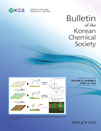
Young-Mook Kang, Yukwon Jeon, Sung Bo Hwang, Hyun Kil Shin, Kyunghwan Oh, Min Sung Kim, Namseok Kim, Hwan You, Hyoungjun Son, Young Hwan Chu, Kwang-Hwi Cho, Yong-Gun Shul and Kyoung Tai No
Abstract : Ethylbenzene (EB) and p-xylene (PX) are important chemicals for the production of industrial materials; accordingly, their efficient separation is desired, even though the difference in their boiling points is very small. This paper describes the efforts toward the identification of high-performance extractive agents for EB and PX separation by distillation. Most high-performance extractive agents contain halogen atoms, which present health hazards and are corrosive to distillation plates. To avoid this disadvantage of extractive agents, we developed a quantitative structure–relative volatility relationship (QSRVR) model for designing safe extractive agents. We have previously developed and reported QSRVR models for single extractive agents. In this study, we introduce extended QSRVR models for binary and ternary extractive agents. The QSRVR models accurately predict the relative volatilities of binary and ternary extractive agents. The service to predict the relative volatility for binary and ternary extractive agents is freely available from the Internet at http://qsrvr.opengsi.org/.
Contribution:
- Make a web application.
- Build in silico models for predicting RV of EB to PX with binary and ternary extractive agents.
- Manuscript writing.
Used programs:
- Ubuntu 16.04 LTS.
- Wordpress with PHP7, MySQL 5.6, Apache 2.4.
- C/C++ for calculating molecular descriptors.
- Java 7 for predicting RV of EB to PX with extractive agents.
- Javascript (jQuery, Ajax) with ChemDoodle 6.x
Article in Industrial & Engineering Chemistry Research 53:11159-11166 · June 2014
Go to Article url.
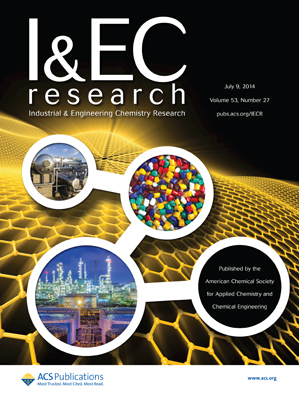
Young-Mook Kang, Yukwon Jeon, Gicheon Lee, Hyoungjun Son, Sung Wook Row, Seonghwan Choi, Young-Jong Seo, Young Hwan Chu, Jae-Min Shin, Yong-Gun Shul, and Kyoung Tai No
Abstract : Extractive distillation is a highly effective process for the separation of compound pairs having low relative volatility values, such as ethylbenzene (EB) and p-xylene (PX) mixtures. Many solvents or solvent mixtures have been screened experimentally to identify a suitable extraction agent for EB/PX mixtures. Because the number of possible solvent and solvent mixture candidates is high, it is necessary to introduce a computer-aided extraction performance prediction technique. In this study, a knowledge-based quantitative structure relative volatility relationship (QSRVR) model was developed using multiple linear regression (MLR) and artificial neural network (ANN) models, with each model having five descriptors. The root-mean-square errors (RMSE) of the training and test sets for the MLR model were calculated as 0.01486 and 0.00905, while their squared correlation coefficients (R2) were 0.867 and 0.941, respectively. The R2 and RMSE values of the total data set for the MLR model were 0.878 and 0.01408, and for the ANN model the values were 0.949 and 0.00929, respectively. The predictive ability of both models is sufficient for identifying suitable extractive distillation solvents for the separation of EB/PX mixtures.
Contribution:
- Build in silico models for predicting RV of EB to PX with single extractive agents.
- Manuscript writing.
Sehan Lee, Young-Mook Kang, Hyejin Park, Mi-Sook Dong and Kyoung Tai No
Abstract : The kidney is the most important organ for the excretion of pharmaceuticals and their metabolites. Among the complex structures of the kidney, the proximal tubule and renal interstitium are major targets of nephrotoxins. Despite its importance, there are only a few in silico models for predicting human nephrotoxicity for drug candidates. Here, we present quantitative structure–activity relationship (QSAR) models for three common patterns of drug-induced kidney injury, i.e., tubular necrosis, interstitial nephritis, and tubulo-interstitial nephritis. A support vector machine (SVM) was used to build the binary classification models of nephrotoxin versus non-nephrotoxin with eight fingerprint descriptors. To build the models, we constructed two types of data sets, i.e., parent compounds of pharmaceuticals (251 nephrotoxins and 387 non-nephrotoxins) and their major urinary metabolites (307 nephrotoxins and 233 non-nephrotoxins). Information on the nephrotoxicity of the pharmaceuticals was taken from clinical trial and postmarketing safety data. Though the mechanisms of nephrotoxicity are very complex, by using the metabolite information, the predictive accuracies of the best models for each type of kidney injury were better than 83% for external validation sets. Software to predict nephrotoxicity is freely available from our Web site at http://bmdrc.org/DemoDownload.
Contribution:
- Collect Human Nephrotoxicity data.
- Build in silico Human Nephrotoxicity Prediction Models.
- Manuscript writing.
Article in Proceedings of the National Academy of Sciences 110(8) · February 2013
Go to Article url.
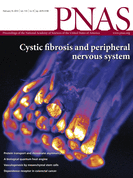
Sehan Lee, Kwang-Hwi Cho, Young-Mook Kang, Harold A. Scheraga and Kyoung Tai No
Abstract : An empirical continuum solvation model, solvation free energy density (SFED), has been developed to calculate solvation free energies of a molecule in the most frequently used solvents. A generalized version of the SFED model, generalized-SFED (G-SFED), is proposed here to calculate molecular solvation free energies in virtually any solvent. G-SFED provides an accurate and fast generalized framework without a complicated description of a solution. In the model, the solvation free energy of a solute is represented as a linear combination of empirical functions of the solute properties representing the effects of solute on various solute–solvent interactions, and the complementary solvent effects on these interactions were reflected in the linear expansion coefficients with a few solvent properties. G-SFED works well for a wide range of sizes and polarities of solute molecules in various solvents as shown by a set of 5,753 solvation free energies of diverse combinations of 103 solvents and 890 solutes. Octanol-water partition coefficients of small organic compounds and peptides were calculated with G-SFED with accuracy within 0.4 log unit for each group. The G-SFED computation time depends linearly on the number of nonhydrogen atoms (n) in a molecule, O(n).
Contribution:
- Contribute new reagents and analytic tools.
- Create a GFE program using C/C++ language.
Used programs:
- Ubuntu 12.04 LTS.
- Netbeans 7.x.
- GNU C/C++ Compiler 4.6.x
- Python 2.4 with scipy, numeric, etc.
Article in Proceedings of the National Academy of Sciences 106(41):17355-8 · September 2009
Go to Article url.
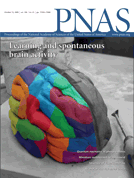
Chang Joon Lee, Young-Mook Kang, Kwang-Hwi Cho, and Kyoung Tai No,
Abstract : The perception of rings in graphs is widely used in many fields of science and engineering. Algorithms developed in the chemistry community, called smallest set of smallest rings (SSSR), applicable only for simple graphs or chemical structures. In contrast, algorithms developed by the computer science community, called minimum cycle basis (MCB) are identical to SSSR yet exhibit greater robustness. MCB-based algorithms can correctly reveal all rings in any complex graph. However, they are slow when applied to large complex graphs due to the inherent limitations of the algorithms used. Here, we suggest a heuristic method called RP-Path. This method is a robust, simple, and fast search method with O(n3) runtime algorithm that correctly identifies the SSSR of all of the test case of complex graphs by using approach different from the MCB-based method. Both the robustness and improvement in speed are achieved by using a path-included distance matrix and describing the characteristic features of rings in the matrix. This method is accurate and faster than any other methods and may find many application in various fields of science and engineering that use complicated graphs with thousands of nodes.
Contribution:
- Degisn and perform research.
- Suggest the idea on a path-included distance matrix.
- Create a RP program using C/C++ language.
- Manuscript writing.
Used programs:
- GNU C/C++ Compiler 3.4.x
- Python 2.4 with scipy, numeric, etc.







